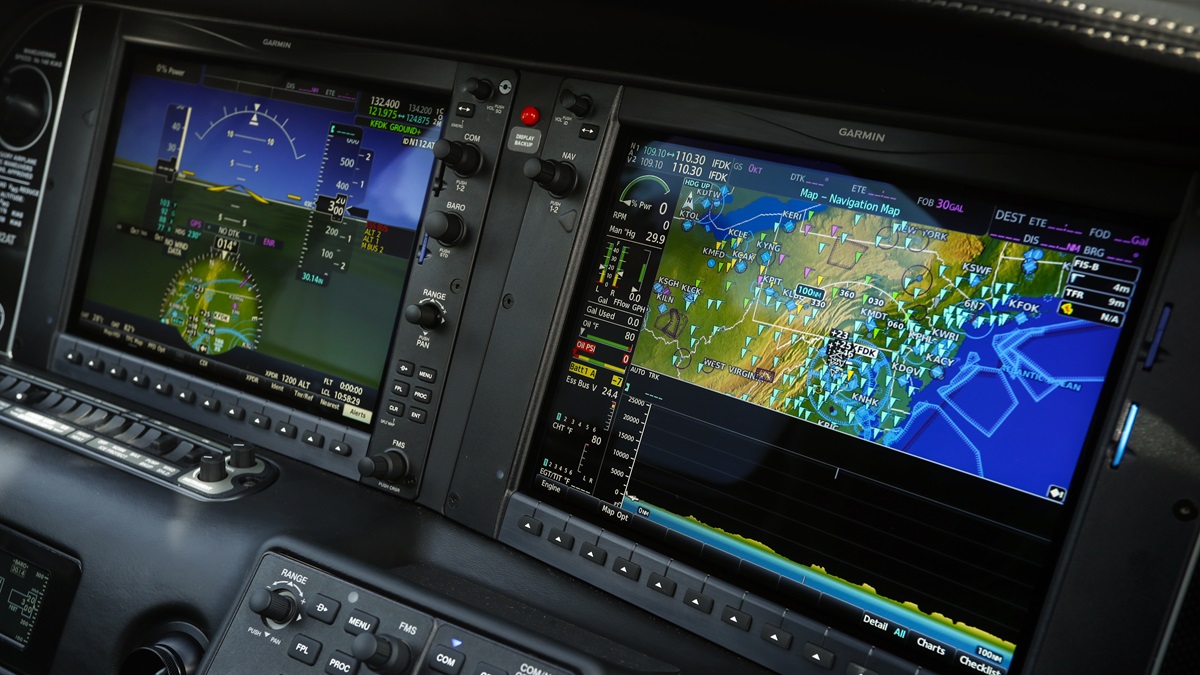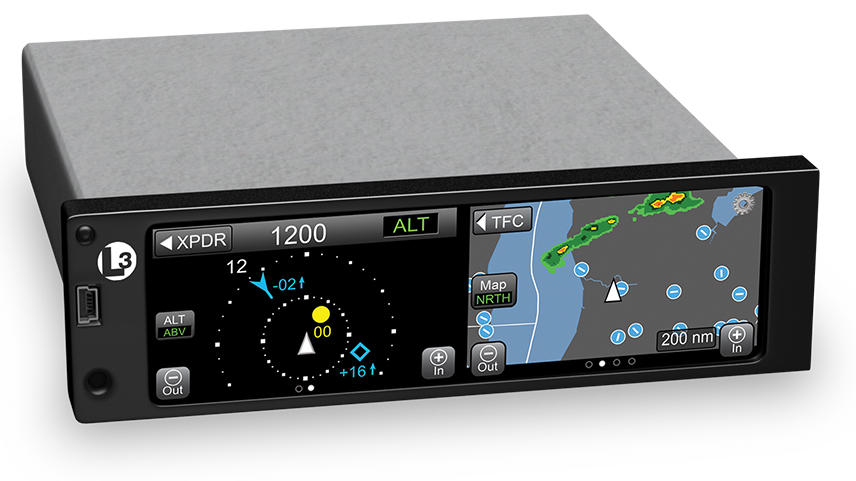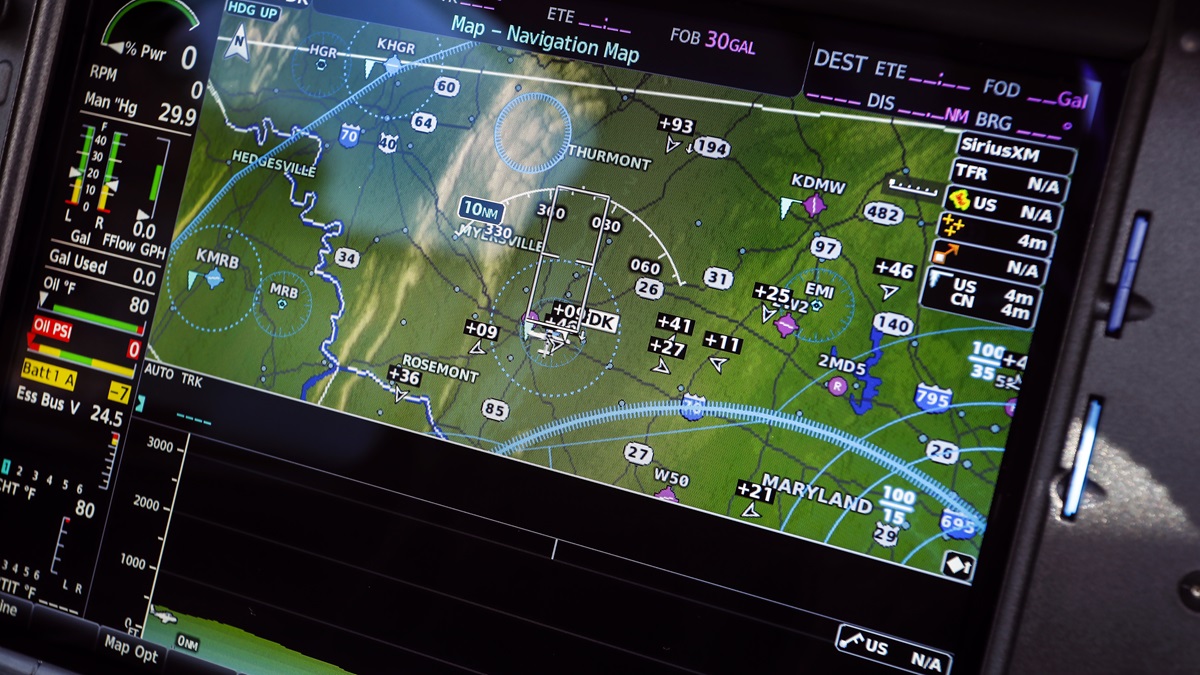Beyond compliance
Leverage your investment with integrated ADS-B In
Aircraft owners are taking a wide range of approaches to the FAA’s impending Automatic Dependent Surveillance-Broadcast (ADS-B) Out mandate. ADS-B uses satellites instead of ground-based radar to determine aircraft location, and it is a key technology behind the FAA’s Next Generation Air Transportation System. For flights after January 1, 2020—just two years from now—ADS-B Out will be required in airspace where a transponder is required today.
Some owners are choosing not to equip right now, and there’s nothing wrong with that. The ADS-B Out requirement is an airspace rule, and if you never fly in the airspace defined by FAR 91.225 (see “Where Do You Need ADS-B?”), equipage is not required. (Piper Cubs, gliders, and other aircraft certificated without an electrical system are exempt from both the transponder and ADS-B requirements.) Over time, however, ADS-B Out hardware will be installed on many of these aircraft as owners move or they’re sold to pilots who need access to airspace where it is required.
Other owners are seeking the least-expensive options for compliance, and there are a number of lower-priced solutions available. Some are Mode S Extended Squitter transponders operating on 1090 MHz (1090ES) that replace the existing transponder with a new one also incorporating ADS-B Out capabilities; others are universal access transceivers (UATs), which generally are remote boxes that operate on 978 MHz (978UAT) and work in conjunction with the aircraft’s existing transponder. Think of the hardware as a data transceiver that sends information about your aircraft to other ADS-B-equipped aircraft, as well as to FAA ground stations.
The most enlightened owners are embracing the plethora of information available from optional ADS-B In services, using it to obtain a degree of situational awareness that we have never before seen in general aviation cockpits. When the ADS-B system was designed, the FAA opted for two datalink frequencies—1090 MHz and 978 MHz—in large part because of concern that 1090, the only transponder frequency, might become too congested. Establishing the 978 MHz datalink allowed the transmission of weather information, including bandwidth-intensive graphics such as Nexrad weather radar images, into the cockpit.
And let’s face it, in-cockpit traffic and weather information are the true incentives for general aviation to equip with ADS-B. Simply being able to continue accessing the same airspace we use today, with our transponders, is a fairly hollow “benefit”—and certainly doesn’t add additional capability to the aircraft. (The airlines will derive such benefits as more efficient routing and reduced in-trail separation from ADS-B equipage, but those capabilities are irrelevant to light general aviation aircraft.)
It’s easy to overlook the “other half” of an aircraft’s ADS-B system. Most of the focus is on the datalink itself, and the accompanying hardware—but equally important is a Wide Area Augmentation System (WAAS) GPS position source that meets the accuracy requirements of FAR 91.227. Many of the less-expensive ADS-B solutions include an integral WAAS GPS receiver to provide position information to the ADS-B transceiver. This often is called a “blind” position source, because nothing else in the cockpit can utilize that information—that receiver will not let you shoot any of the rapidly growing number of precision GPS approaches. WAAS navigation allows localizer performance with vertical guidance (LPV) instrument approach procedures that are very similar to Category I ILS approaches. In September 2017, there were 3,857 published LPV approaches in the United States serving 1,881 airports—including 1,118 airports without an ILS.
If you fly under instrument flight rules a lot and don’t already have WAAS GPS navigation capability, this may be the time to consider an upgrade. Why now? Because if you are planning to equip with ADS-B, a WAAS GPS navigator that can serve as your required ADS-B positon source could give you additional options—and at the very least, save you the cost of a blind WAAS receiver that you don’t need.
With the position-source decision made, it’s time to consider the information available from ADS-B In and how you would like to use it in the cockpit. Flight Information Services-Broadcast (FIS-B) uses the 978 MHz frequency to broadcast Nexrad radar images, METARs, TAFs, airmets, sigmets, convective sigmets, pireps, winds and temperatures aloft, distant and Flight Data Center notams, and information on temporary flight restrictions. Next year, FIS-B should gain lightning strikes, cloud tops, icing (current and forecast), turbulence, center weather advisories, and graphical airmets. Traffic Information Services-Broadcast (TIS-B) uplinks the position of transponder-equipped aircraft within radar coverage, and can display it along with ADS-B traffic information.
How do you want to view that data? A tablet such as an Apple iPad may serve all your needs, and its high-resolution display is a great way to view weather information. You may prefer to see traffic on a certified display—say, your GPS navigator or a multifunction display—because it falls naturally into your scan. Many systems with that degree of integration will go one better, and give you an aural warning when traffic is close enough that you should be concerned. Aircraft owners have heard that “Traffic—two o’clock!” call on the flight home from their ADS-B hardware installation and immediately deemed their investment worthwhile. (Some did not even know they would be receiving that capability.)
What gives you this degree of integration? While Garmin was an early leader in ADS-B integration, the company really upped its game with the 2016 introduction of the GTX 345 transponder—a single box that combines 1090ES ADS-B Out with dual-band ADS-B In, as well as a Bluetooth transceiver for wireless display on a tablet. The GTX 345 can depict traffic and weather on the G1000 and other Garmin integrated flight displays, as well as navigators such as the GTN 650 and 750; most of the data also can be accessed on older-technology GNS 430W and 530W units. In all these cases, the pilot benefits from aural traffic alerting.
Avidyne increased ADS-B data integration with its R10.2 software. That update, which received FAA approval in March 2017, added compatibility with several third-party ADS-B products. It allows Avidyne GPS/nav/coms to display ADS-B In data from the Garmin GTX 345 and L3 Aviation Products’ Lynx NGT-9000. In addition, Avidyne WAAS GPS navigators running R10.2 software can provide GPS position information to Garmin GTX 335, 345, and 330ES ADS-B transponders, as well as the Appareo ES and ESG.
Does this mean you need a full glass cockpit, or a high-end GPS navigator, to enjoy integrated ADS-B In data? No. L3 Aviation Products offers the Lynx NGT-9000, a single-box 1090ES transponder that includes dual-frequency ADS-B In, Wi-Fi to your tablet, and a color touchscreen display. It also has an integral WAAS GPS to serve as the ADS-B position source. One option is Active Traffic, a more refined alerting technology that gives earlier notice of a potential conflict, and continues working below 500 feet agl—where many traffic conflicts occur. Another option is an embedded Terrain Awareness Warning System (eTAWS), which provides aural and visual alerting of terrain hazards and obstructions such as antennas; TerrainVision depicts terrain but does not alert.
Aircraft owners considering an NGT-9000 might need to rearrange their radio stacks. To efficiently utilize the color touchscreen, the transponder should be near the top of the stack—just below the audio panel. In most airplanes the transponder is buried at the bottom of the stack, or—worse—on the right side of the panel.
How much will an all-in, integrated ADS-B solution cost? Certainly, more than a bare-bones, meet-the-mandate ADS-B Out installation. And the cost will be greatly influenced by what’s already in your panel—for example, if you already have a Garmin WAAS GPS navigator, you might be able to replace that old analog transponder with a GTX 345 for not much more than $6,000 installed—just a couple thousand more than an ADS-B Out-only installation.
The important thing to remember is that you don’t have to buy a whole new panel to truly benefit from ADS-B technology. But if you’re doing that anyway, there’s no better time to add ADS-B to the work order.
Email [email protected]







